
Source: Got a new job, Stefan, Flickr
You have looked at brief excerpts from arguments about whether to teach cursive.
Now we are going to look more closely at a single argument on a different topic.
To analyze this argument, you will consider the following:
- Issue: You will identify the issue.
- Perspective: You will define the perspective from which the author is looking at the issue. In other words, you will look at what is most important to the author.
- Position: You will identify the author’s position on the issue. Which side of the issue does the author favor?
- Proposal: You will look for a proposal for what should be done.
- Evidence: Finally, you will look at the evidence the author uses to support a position.
That’s a lot to take on, and maybe it doesn’t sound like it’s going to be much fun, but working through an argumentative essay using these steps will make you a better reader and help you think more clearly about your response to an author’s views.

Source: Kathryn concentrated, Amazee Labs, Flickr
Before we start, we are going to take a minute to discuss two rhetorical devices you will encounter in this essay: concessions and qualifications. You’re probably familiar with concession stands at sports arenas and with qualifying rounds of a tournament. The meanings we are going to give these words are related to, but are not the same as, the meanings they have in reference to soft drinks and prelims.
- Concessions in an argument give an author the chance to say, “I know there are some exceptions or problems, and here’s why I still feel the way I do about this issue.” Think back to the issue of wearing shoes versus going barefoot. A person arguing for going barefoot might offer this concession: “I know that it is possible to step on a sharp rock or even a nail when you are going barefoot, but the pleasure and the spiritual benefits of going barefoot outweigh those potential dangers.”
- Qualifications give an author a chance to narrow the scope of a position. An author might argue in favor of going barefoot and offer this qualification: “I am not saying I think it is OK to go to school barefoot. There are circumstances and situations when shoes are absolutely required. All I’m saying is that when there is a choice to make, you should choose bare feet.” In this example, the author narrows the scope of the position by saying it only applies when “there is a choice.”
Now, let’s get back to the argument analysis.
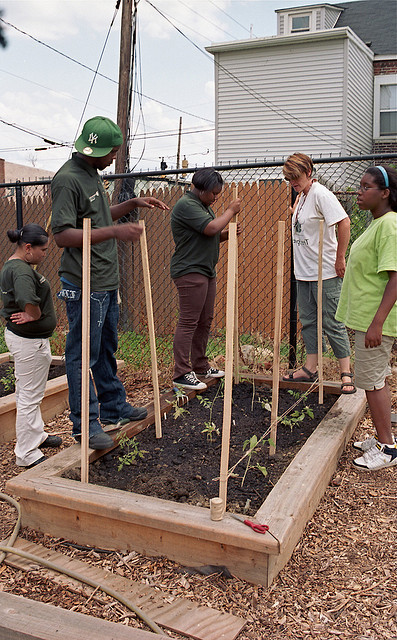
Source: young workers at Wilmington's urban
farm, TCDavis, Flickr
To make your work easier, you are going to look at one section of this essay at a time. In the first section, you want to be able to identify the issue and the position of the author in relation to this issue.
Read, section by section, the following article from the New York Times titled “Teenagers’ Work Can Have Downsides.” The article was written by Jerald G. Bachman, introduced as “a distinguished senior research scientist at the Institute for Social Research and a research professor at the Survey Research Center at the University of Michigan.”
As you read this section, look for the issue and the position.

Source: Baristas in their element, churl, Flickr
Questions about whether teenagers should be employed during the school year have interested social scientists for many decades. In 1975, when my colleagues and I began the “Monitoring the Future” project, our nationwide long-term study of the lifestyles and values of youth, we made it a point to include questions about such employment as well as possible consequences. Over the years we and other researchers have consistently found that high school students who work long hours in jobs during the school year tend to have poorer academic performance and are more likely to be involved in a variety of problem behaviors, including delinquency, cigarette use and other drug use; in general, these findings are clear for white and Asian American students, but weaker for Hispanics and still weaker for African Americans.
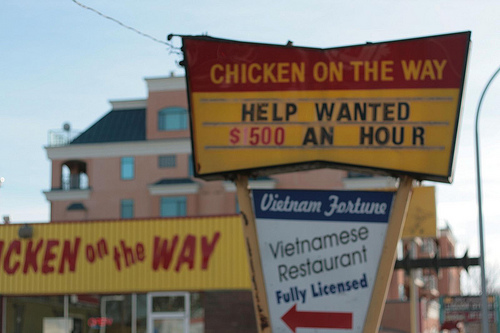
Source: hourly wage, melodramababs, Flickr
What issue does the author address in this essay?
a. Jobs for high school students
Correct. The author refers to values, problem behaviors, and drug use, but the paragraph focuses on jobs.
b. Values of youth
Try again. Look for the focus of the entire paragraph, not just something the writer mentions briefly.
c. Problem behaviors
Try again. Look for the focus of the entire paragraph, not just something the writer mentions briefly.
d. Drug use
Try again. Look for the focus of the entire paragraph, not just something the writer mentions briefly.
What is the author’s position on the issue that he addresses in this essay?
a. Teenagers should never have jobs.
Try again. Although the author doesn’t explicitly state that students should do a certain thing, he implies it by stating a connection between jobs and long work hours.
b. High school students should not work long hours during the school year.
Correct! The author does not say that students should not work long hours during the school year; instead he states that students who work long hours tend to have poor academic performance and be involved in problem behaviors.
c. Students who work only a few hours each week are still less likely to do well academically.
Try again. Although he doesn’t explicitly state that students should do a certain thing, he implies it by stating a connection between jobs and long work hours.
d. Jobs are the cause of most problem behaviors in teenagers.
Try again. Although he doesn’t explicitly state that students should do a certain thing, he implies it by stating a connection between jobs and long work hours.
In the next section, look for a concession and a qualification.
Remember: Authors use concessions to bring up objections to their positions. By admitting that there are going to be objections, authors are able to explain why these objections do not invalidate their positions on the issue.
Authors use qualifications to narrow the points they make; for example, an author might write, “I’m not talking about all teenage jobs.” Most good arguments involve some qualification.
Read the next section of Bachman’s essay.
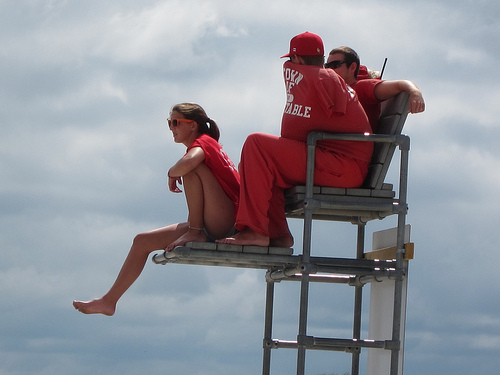
Source: Lifeguards, Joe Shlabotnik, Flickr
But a question always remained: Are the poor outcomes consequences of the jobs, or merely symptoms of other prior and more fundamental difficulties? There is broad agreement that at least some of the connections between long work hours and problem behaviors are symptoms of issues like poor adjustment to school and greater interest in short-term gratification. Yet even after doing our best to take account of these prior differences, we and many others have found some residual links with problem behaviors that seem attributable to the work itself.
Does this mean that all paid employment during the school year is a bad thing? Not at all. The research also shows that students who hold jobs requiring only modest hours per week are actually better off, on average, than those without jobs.

Source: Summer days drifting away, TheeErin, Flickr
What concession does the author make? (What does he admit could be a problem with his evidence?)
a. Jobs cause more problems than just poor schoolwork.
Try again. A concession will state something that a person who objects to the writer’s position might say.
b. His colleagues disagree about the connection between problem behaviors and jobs.
Try again. A concession will state something that a person who objects to the writer’s position might say.
c. Jobs cause poor adjustment and greater interest in short-term gratification.
Try again. A concession will state something that a person who objects to the writer’s position might say.
d. Some of the problem behaviors in teens he studied result not from the long work hours but from other circumstances.
Correct! The author makes clear that there are other reasons for problem behaviors besides jobs.
What qualification does the author make? (What does he say that narrows the scope of his position?)
a. He says that “some” employment is good if it is only a few hours a week.
Correct! The author is not arguing that all jobs are bad for high school students, only certain jobs (the ones requiring long work hours).
b. He says that “some” employment is good if it is not during the school year.
Try again. No, he does not mention summer employment.
c. He says that “some” employment is good if it is “unpaid” employment.
Try again. No, he does not address unpaid employment.
d. He says that “some” employment is good but that “all paid employment during the school year is a bad thing.”
Try again. No, he never makes the statement that “all paid employment during the school year is a bad thing.”
Now, read the final section and watch for a proposal, an action the author thinks people should take in response to the evidence he has given to support his argument.
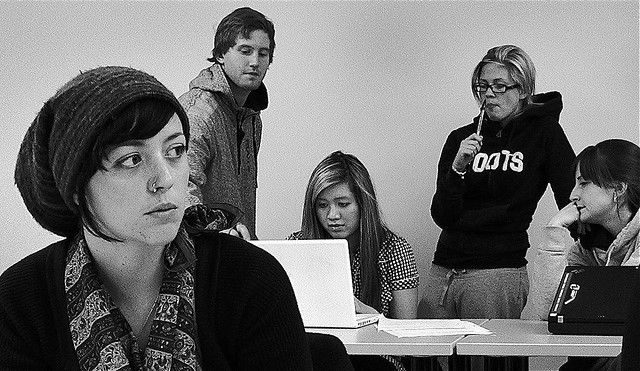
Source: Students in Class, Wayne MacPhail, Flickr
So what is the “sweet spot” in terms of teenage work? The ideal seems to be a job that requires relatively few hours per week during the school year. For some outcomes, such as substance use, the fewer hours the better. Our own longitudinal research has shown that college completion rates are highest among those who worked 15 hours a week or less when they were high school seniors.
So what should students do, and what should parents encourage? A starting point is that research clearly shows it is fine to get a job, as long as you can hold the number of hours down to 15, 10 or less per week during the school year.
What proposal does the author make? (What does he say people should do now that they know the evidence for his position?)
a. He says students should work at least 15 hours a week throughout high school.
Try again. Imagine that the author is talking to you (or your parents), and you ask,“So what do you want me to do?” The answer to that question is the proposal.
b. He says students should work 15 hours a week or fewer during college.
Try again. Imagine that the author is talking to you (or your parents), and you ask, “So what do you want me to do?” The answer to that question is the proposal.
c. He says students should work 15 hours or more during their school year in high school.
Try again. Imagine that the author is talking to you (or your parents), and you ask, “So what do you want me to do?” The answer to that question is the proposal.
d. He says students can benefit from a job requiring 15 hours or fewer during the senior year.
Correct! The author announces that he is going to make a proposal with the sentence “So what should students do, and what should parents encourage?” The answer to that question (which he gives next) is the proposal.
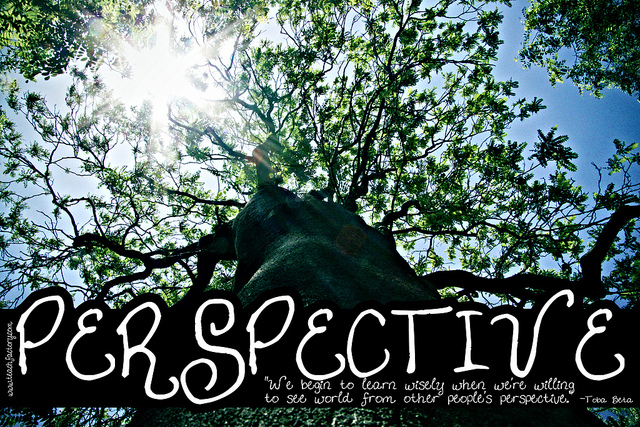
Source: Perspective, Krissy Venosdale, Flickr
Is that it for this argument? No. Now, we need to consider the author’s perspective and the evidence.
We didn’t consider the perspective yet because it is not immediately obvious from the start of the essay. We didn’t consider evidence yet because we want to consider the entire essay before we analyze the author’s use of evidence.
Now let’s consider the perspective. Read the list of possibilities below and choose the aspect that is most important to this author.
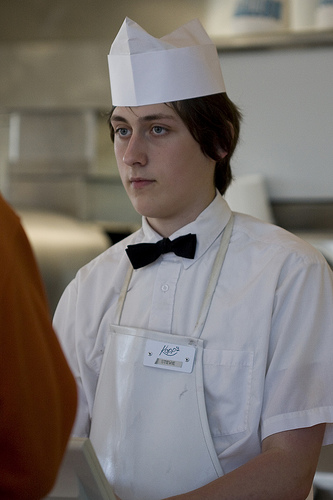
Source: IMG_9998 - excitement,
wesbolton, Flickr
The author seems interested in this issue from the perspective of —
a. long-term effects of paid employment
Try again. We can assume the author hopes students will succeed in life and learn from their jobs. However, he focuses on jobs as they relate to high school behavior, both academic and social.
b. effect of employment on problem behaviors in school
Correct! We assume the author is concerned about jobs in relation to academic success and problem behavior in high school, not long-term effects or learned skills.
c. jobs as a way to learn to manage money
Try again. We can assume the author hopes students will succeed in life and learn from their jobs. However, he focuses on jobs as they relate to high school behavior, both academic and social.
d. the benefits of jobs as training for careers
Try again. We can assume the author hopes students will succeed in life and learn from their jobs. However, he focuses on jobs as they relate to high school behavior, both academic and social.
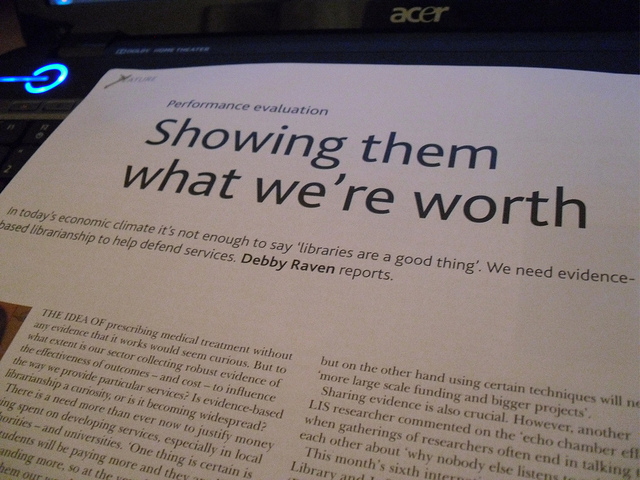
Source: Day 160: Evidence-based librarianship, JOP Alcock, Flickr
We have the issue, the perspective, the position on the issue, and the proposal. Now we need to consider the most important thing: the evidence.
What evidence does Bachman use, and what type of evidence is it? In an earlier lesson, you learned about empirical, anecdotal, and logical evidence. Review Differentiate Among Empirical, Anecdotal, and Logical Evidence in the Related Resources to refresh your memory about these types of evidence.
After you are clear on differences among the types of evidence, answer the questions below.
Which type of evidence is the primary support for Bachman’s argument?
a. Empirical
Correct! Any formal study, such as the one the author and his colleagues conducted, counts as empirical research, and the results count as empirical evidence.
b. Anecdotal
Try again. The author does not use as evidence a story about himself or someone he knows. Therefore, this evidence is not anecdotal.
c. Logical
Try again. The author does not base his argument on connections between his conclusions and knowledge that has already been validated. Therefore, this evidence is not logical.
What evidence does the author use to support this position?
a. He has observed teenagers who have jobs and those who don’t.
Try again. He has probably observed teenagers. However, the evidence he uses is based on a different source: His research study.
b. Firsthand experience with his own children has made him aware of the connection between long work hours and poor academic performance.
Try again. There is no mention in the article that the author is using firsthand experience to support his position. However, the evidence he uses is based on his research study.
c. He has worked with colleagues on a long-term study of teenagers that included questions about jobs.
Correct! The long-term study is the source of evidence in this argument, and it is based on research.
d. He has interviewed many experts in the field of education about the issue of teenagers having jobs.
Try again. We would hope he has also discussed this issue with other experts in the field. However, the evidence he uses is based on a different source: it is based on his research study.
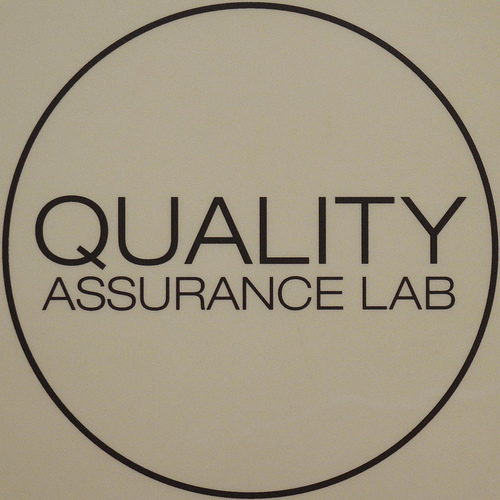
Source: Quality Assurance Lab, Tom Magliery, Flickr
What can be said about the quality of the evidence Bachman offers? (To what extent do we believe that Bachman knows what he is talking about? Is he in a position to know about this topic?)
a. The quality is good based on Bachman’s professorship at the university and the way he did the study: with colleagues over a long period of time.
Correct! Bachman is a professor and a “Distinguished Research Scientist,” and the study is “long term.” Therefore, we can trust the evidence.”
b. The quality of the research is not good because Bachman does not give us the statistical results.
Try again. Given the audience and the position Bachman holds, you should consider his evidence good enough for a newspaper reader.
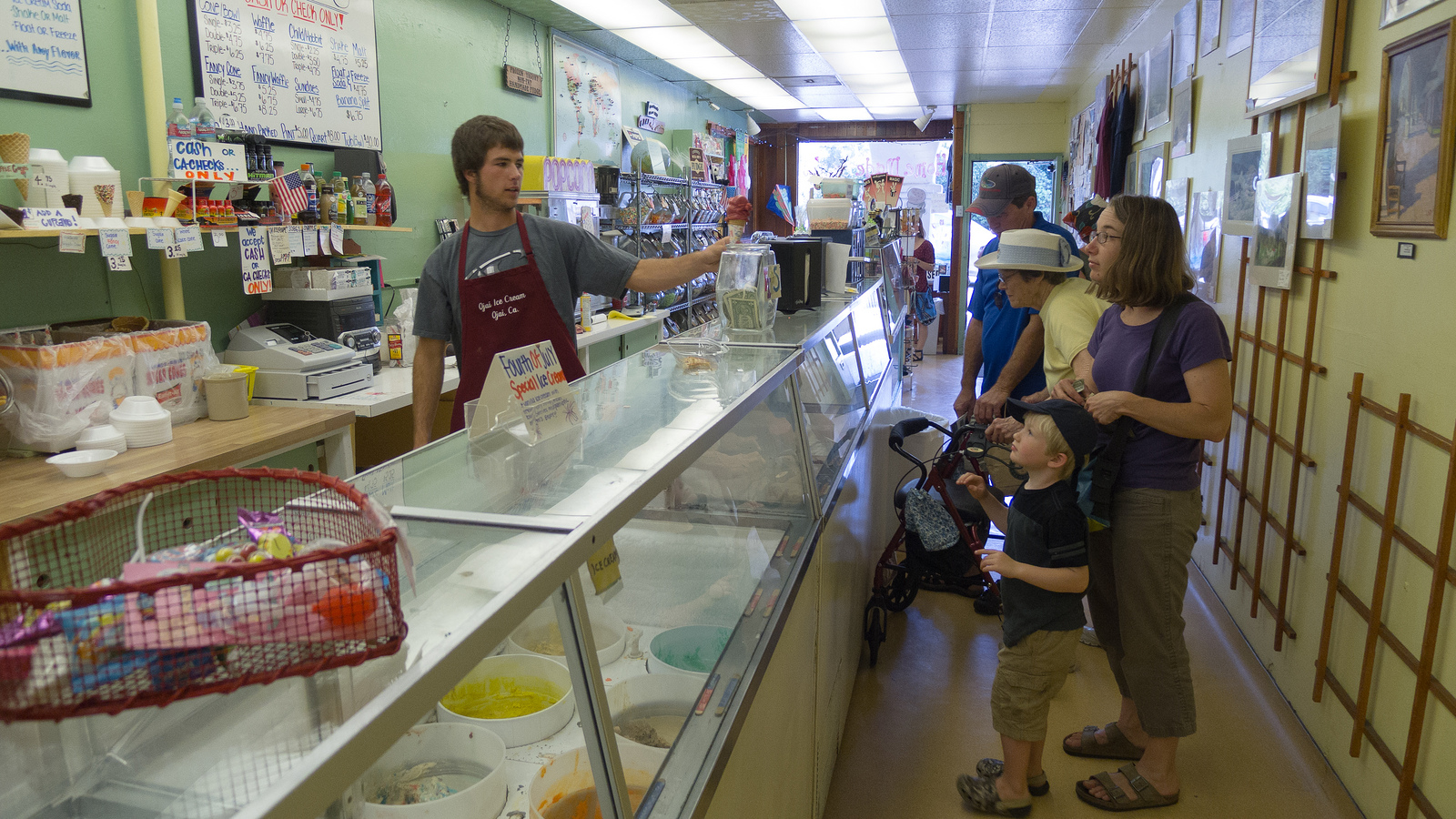
Source: getting a cone, dolanh, Flickr
What can be said about the relevance of Bachman’s evidence? (To what extent does the evidence connect with the claim?)
a. The relevance of the evidence is good. All of the author’s evidence connects with the issue of jobs for high school students.
Correct! Bachman uses as evidence only the part of his study that deals with jobs for high school students.
b. The relevance of the evidence is not so good. Some of the evidence has nothing to do with the issue of jobs for high school students.
Try again. All of Bachman’s evidence relates to jobs for high school students. Is this the issue? It is, so everything is relevant.
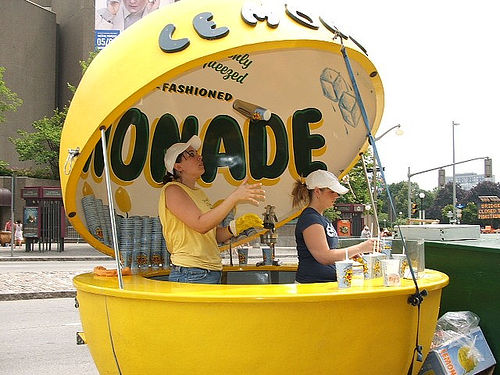
Source: summer job 2, Stephen, Flickr
What can be said about the credibility of Bachman’s evidence? (To what extent does the evidence stand on its own, or to what extent would the author need to back up the evidence or research it further?)
a. The evidence is credible as presented.
Try again. We might trust Bachman, but this does not mean that the evidence itself is credible; it just means that after looking at the linked study, we would find it credible.
b. The evidence may be credible, but we would need to refer to Bachman’s study.
Correct! There is some reason to trust Bachman’s presentation of results, but to actually be confident about his evidence, we would need to look at the printed report of the study.
c. The evidence may be credible, but we would need to do further research on our own.
Try again. Given the audience and the type of publication he was writing for, the evidence, including the link to his printed study, is probably sufficient to count as credible.
d. The evidence is clearly not credible.
Try again. The evidence has some credibility.
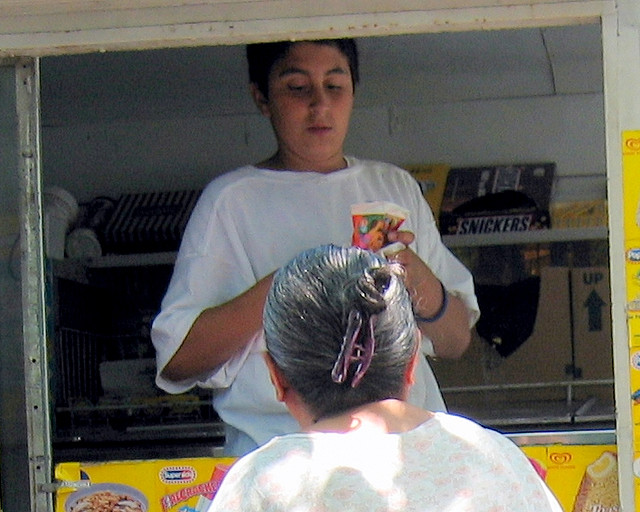
Source: kid has a summer job, Susan Sermoneta, Flickr
What would you need to do to accurately assess the credibility of Bachman’s empirical evidence?
a. Ask friends about their work experience in high school.
Try again. It is almost always good to talk with other people about an issue that concerns you, but this will not make the evidence in an argumentative text more (or less) credible.
b. Find out what the actual statistical findings were from Bachman’s study.
Correct! In fact, there is a link in the article to a Web site with the research findings:
http://monitoringthefuture.org. We need to look at the printed report of the study.
c. Reread the information Bachman gives to make sure it is clear.
Try again. Rereading is also usually a good course of action. However, the first step of assessing credibility is to look at the study.
d. Contact Bachman or one of his colleagues to check on the research.
Try again. Contacting an author directly is a good idea. However, the first step of assessing credibility is to look at the study.














